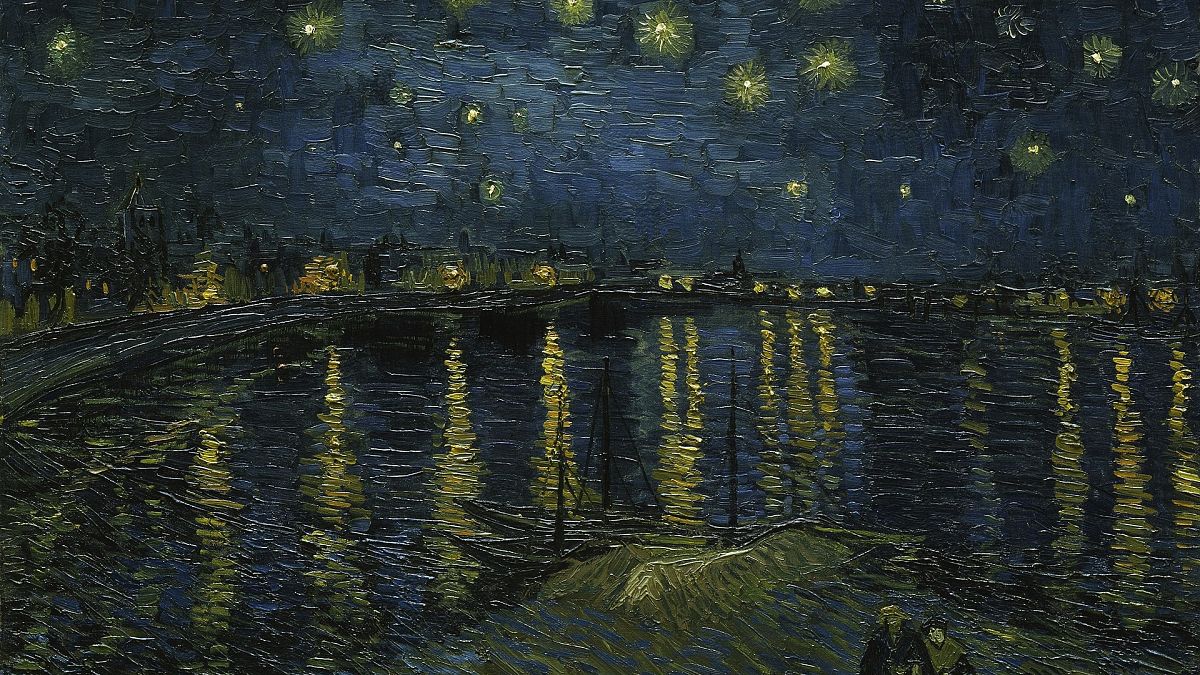London’s National Gallery is hosting a stunning Van Gogh exhibition, featuring his iconic Sunflowers painting, which has left the United States for the first time since 1935.
For the first time, two of Van Gogh’s Sunflowers paintings are being exhibited as a triptych alongside La Berceuse (1889), also known as Madame Augustine Roulin Rocking a Cradle, as the iconic Dutch painter originally envisioned.
Theo van Gogh, the artist’s brother, had originally suggested this arrangement, and the National Gallery in London has now brought this idea to life in a major exhibition coiniciding with the institution’s 200th anniversary.
Showcasing more than 60 works from the final two years of Van Gogh’s life, a period spent in Provence where he revolutionised his approach to painting while struggling with his declining mental health, the exhibition has been described as a “once-in-a-century” spectacle and a “riveting rollercoaster ride from Arles to the stars”.
Curator of the exhibition, Cornelia Homburg, highlights the significance of the moment: “This is actually the first Van Gogh exhibition that taken place at the National Gallery in London, which is quite extraordinary, especially considering the history it has. It is also a moment when there are extraordinary works of art that have never left its museum’s.”
The Philadelphia Sunflowers initially remained in Arles, France, with Van Gogh’s friends before being purchased by American collector Carroll Tyson. In 1935, it became part of the Philadelphia Museum of Art’s collection.
Other highlights of the exhibition include Starry Night Over the Rhone, depicting Van Gogh’s view across the River Rhone, a short walk away from his famous yellow house in Arles. Although painted largely en plein air, Van Gogh made deliberate compositional choices here, such as positioning two lovers in the foreground, and employing his signature broad, expressive brushstrokes to convey intense emotion.
Another key piece is The Public Garden, Arles (1888) which captures Van Gogh’s many visits to the gardens that summer. The painting showcases vibrant autumnal oranges, and on 22 October, Van Gogh wrote to his brother Theo, confessing that despite his resolve not to paint, he couldn’t resist capturing the park’s autumn hues.
One of the more personal pieces is Van Gogh’s portrait of his chair, a simple depiction of a rustic chair with his pipe and tobacco resting on it.
For art critic Estelle Lovatt, this exhibition offers a rare, emotional and intimate glimpse into Van Gogh’s work from his own perspective.
“This is such an extraordinary, unique experience both for the gallery but for the visitors as well. I mean, I’ve never before felt my heart beating as much as I have walking around this. I don’t feel like I’m just looking at a Van Gogh painting. I feel as though I’m looking into Van Gogh soul and that at the same time he’s looking back at me.”
She adds: “As you’re walking through the exhibition, you seem to travel with him through these last couple of years of his life. And even though he’s churning out so many paintings, I mean, it’s almost as important to him as it is breathing. And we feel that.”
The Van Gogh exhibition opens at the National Gallery from 14 September 2024 until 19 January 2025, after which Philadelphia Sunflowers will return to its current home in the US.
Video editor • Theo Farrant

